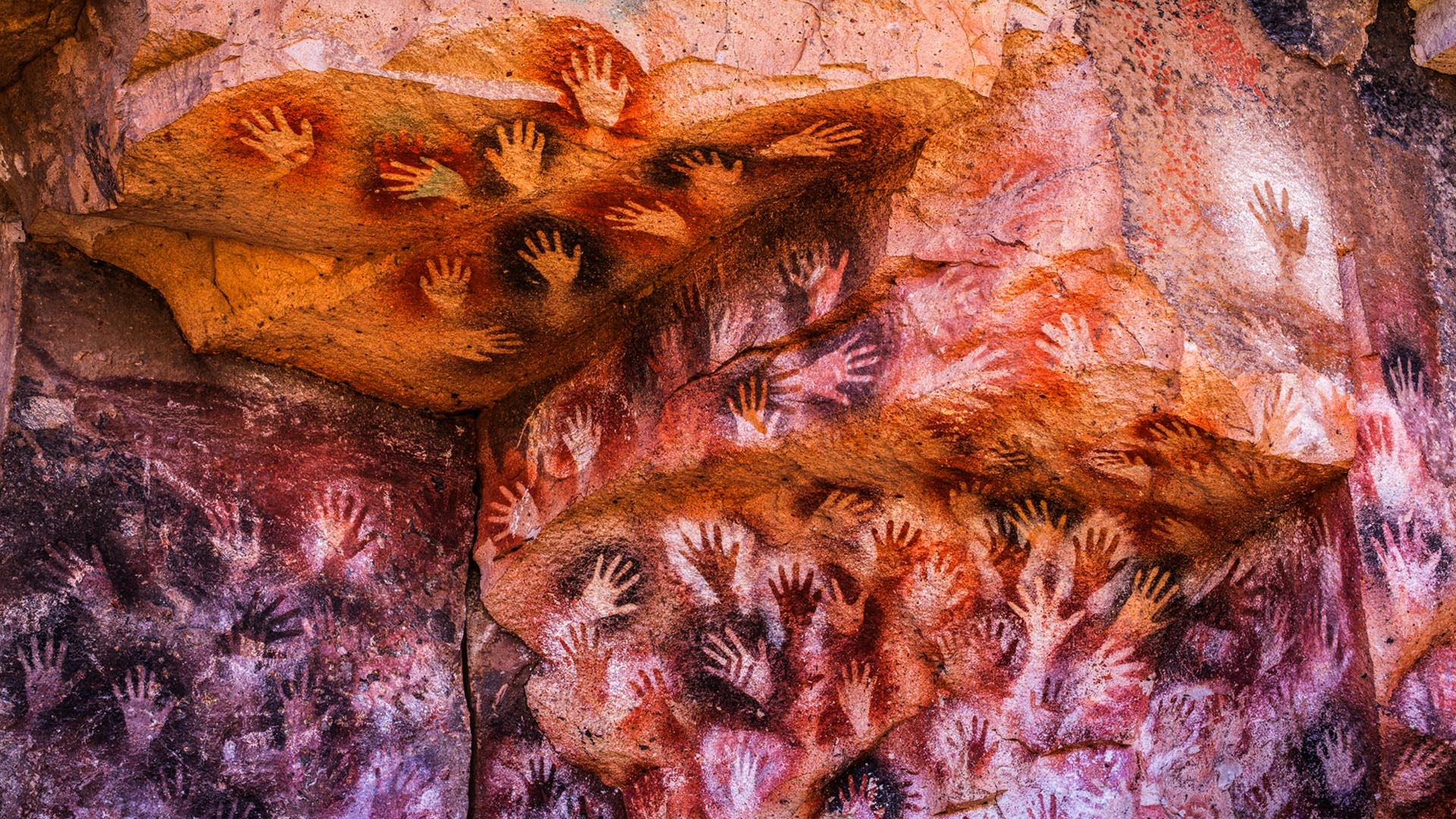Cave of the hands

Location
The Cave of the Hands (Cueva de las Manos) is located in the province of Santa Cruz, Argentina, in the Patagonian region. It is situated in the Pinturas River Canyon, a remote area known for its rugged beauty and archaeological significance.
Description of the Place
Is renowned for its ancient rock art, featuring stenciled human hands, as well as guanacos (wild llama-like animals), geometric shapes, and other figures painted or stenciled on the cave walls. These artworks are estimated to be over 9,000 years old and provide valuable insights into the lives and cultures of the early inhabitants of Patagonia.
History
The rock art in the Cave of the Hands dates back to the prehistoric period, created by the ancestors of the indigenous peoples who once inhabited this region. It is considered one of the most significant examples of prehistoric rock art in South America.
Visiting Hours
The cave site is open to visitors, but access may be restricted or guided tours required to protect the delicate artworks. It’s advisable to check ahead for visiting hours and any special regulations.
Significance
Is significant for its archaeological and cultural value, offering a glimpse into the artistic and symbolic expressions of ancient peoples in Patagonia. It has been designated as a UNESCO World Heritage site since 1999.
Entrance Fees
Entrance fees to the Cave of the Hands vary depending on residency status (Argentine residents, Mercosur residents, or international visitors) and age. Fees contribute to the preservation and conservation efforts of the site.
Features of the Place
- Rock Art: The main attraction is the ancient rock art, predominantly featuring stenciled human hands, which are believed to have been created through a process of spraying pigment over hands pressed against the rock surface.
- Pinturas River Canyon: The cave is situated in a scenic canyon along the Pinturas River, surrounded by rugged cliffs and desert-like landscapes characteristic of the Patagonian region.
Climate and Altitude
The climate in the Cave of the Hands area is arid, with hot summers and cold winters. Altitude varies within the region, influenced by the surrounding plateau and river canyon terrain.
How to Get There
Access to the Cave of the Hands typically involves traveling by road from nearby towns such as Perito Moreno or Los Antiguos. The area is remote, and travel arrangements may require planning ahead, including possibly arranging for guided tours.
What to Do
- Guided Tours: Learn about the history and significance of the rock art through guided tours provided by knowledgeable local guides.
- Photography: Capture the stunning ancient artworks and scenic landscapes of the Pinturas River Canyon.
- Hiking and Exploration: Explore the surrounding area to appreciate the natural beauty and geological features of the region.
Most Characteristic Features
The most characteristic features of the Cave of the Hands include its ancient rock art, which provides a direct connection to the cultural heritage and artistic traditions of early Patagonian inhabitants. It’s a remarkable site for understanding the prehistoric human presence in South America.











